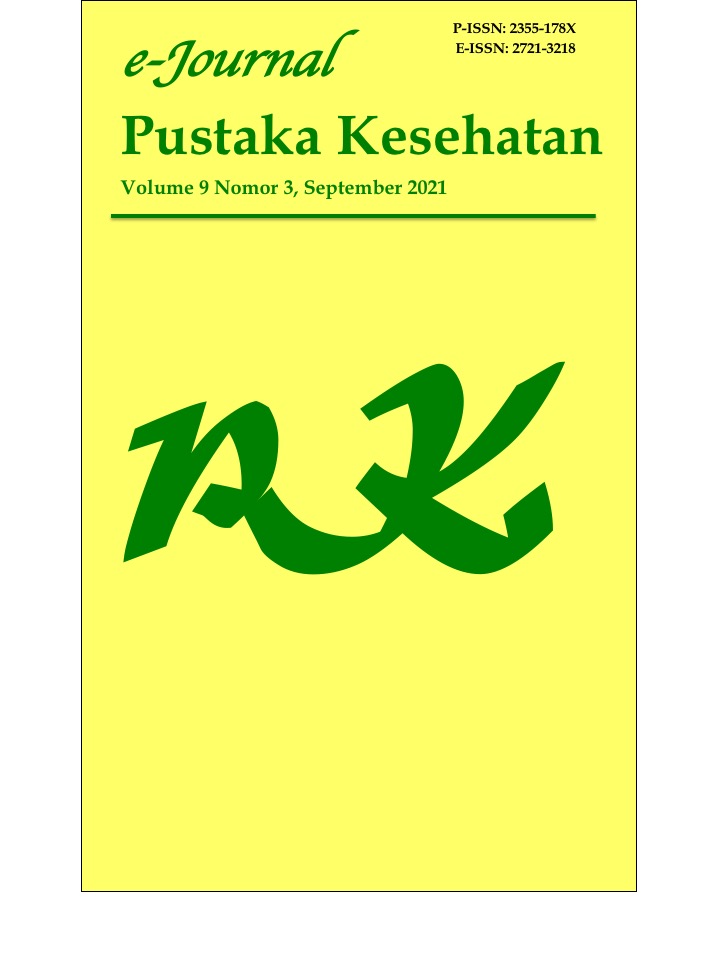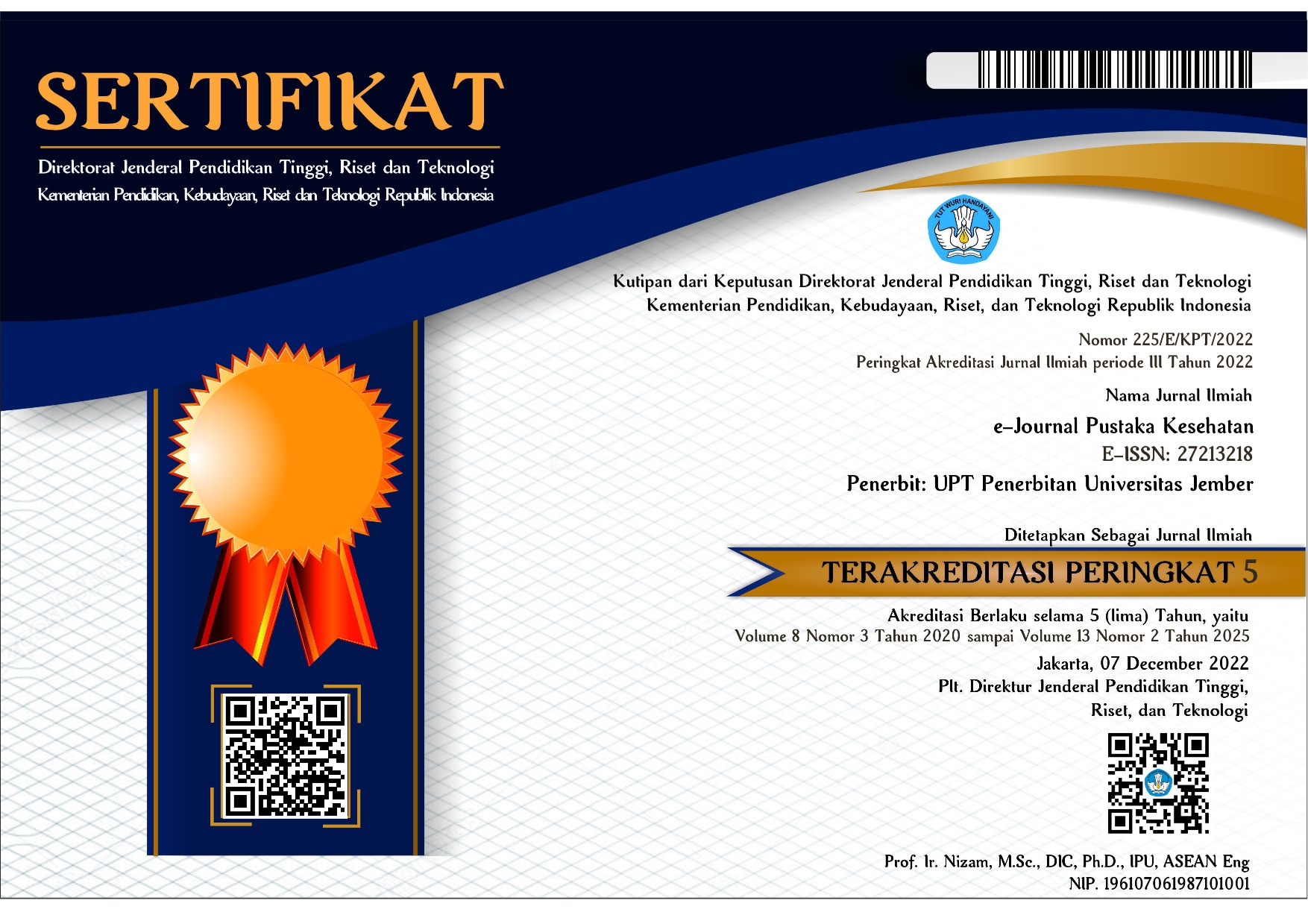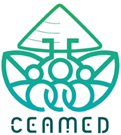Daya Hambat Ekstrak Minyak Atsiri Kulit Buah Jeruk Siam (Citrus nobilis L.) terhadap Pertumbuhan Candida albicans
DOI:
https://doi.org/10.19184/pk.v9i3.17425Keywords:
antifungal, C. albicans, essential oil, siam orange peel, oral candidiasisAbstract
The high prevalence of oral candidiasis needs special attention. Candida albicans (C. albicans) play a critical role in the progression of deeper oral candidiasis. An effective and safe strategy to control C. albicans activity was needed. The essential oil from siam orange peel has been shown to have antifungal properties. This study aimed to determine the optimal concentration of the essential oils of siam orange peel to inhibit the growth of C. albicans. This is experimental laboratory research with a posttest-only control group design. The water stream was used to get essential oil extract from siam orange peel and made in several concentrations 25%, 50%, 75%, and 100%. The disk diffusion method was applied to determine the inhibition of essential oil extract of siam orange peel to the C. albicans. Nystatin and DMSO 10% plus tween 80 0,5% were used as positive and negative control groups. The results found that the essential oil extract of siam orange peel concentration of 50% and above showed an inhibitory effect on the growth of C. albicans with the most optimal is 75%. The essential oil extract of Siam Orange Peel would be useful as a therapeutic agent to control oral candidiasis.
Downloads
References
[2] Budiarto S, Subagyo G. Kandidiasis di Mulut Akibat Khemoterapi dan Penatalaksanaannya. Majalah Kedokteran Gigi. 2011; 18(2): 173-177.
[3] Caranzza FA, Newman MG, Takei HH, Klokkevold PR. Caranzza’s Clinical Periodontology 13th end. China: Saunders Elsevier; 2019.
[4] Rikhmasari DN, Susilo DK. Perbandingan kemampuan ekstrak kulit pisang agung semeru dan pisang mas kirana varietas lumajang dalam menghambat pertumbuhan Candida albicans. Jurnal Florea. 2017; 4(2): 31-38.
[5] Lyu X, Chen Z, Zhi MY, Hong H. Efficacy of Nystatin For The Treatment of Oral Candidiasis: A Systematic Review and Meta-Analysis. Drug Des Develop Ther. 2016; 10: 1161–1171.
[6] Greenberg MS., M. Glick, dan J.A. Ship. Burket’s Oral Medicine. 11th Ed. Canada: BC Decter Inc Hamilton; 2008.
[7] Sanguinetti M. Posteraro B. Antifungal drug resistance among Candida species: mechanisms and clinical impact. Mycoses. 2015; 58: 2–13.
[8] Wulandari M, Hartadi R, Agustina T. Analisis Produksi Dan Pendapatan Serta Strategi Pengembangan Komoditas Jeruk Siam Di Kecamatan Bangorejo Kabupaten Banyuwangi. Berkala Ilmiah PERTANIAN. 2014; 1-12.
[9] Kartika K, Rizki FA, Amanatufahmi EH, Lestari T, Sa’diah I. Pemanfaatan Limonene dari Kulit Jeruk Nipis dalam Pembuatan Lilin Aromatik Penolak Serangga. Conference paper. PKM-Penelitian; 2014.
[10] Gunawan D, Mulyani S. Ilmu obat alam (farmakognosi), jilid I. Jakarta: Penerbit Penebar Swadaya; 2010.
[11] Pasaribu SMH, Wardenaar E, Dina W. Uji Aktivitas Anti Jamur Ekstrak Minyak Atsiri Kulit Jeruk Citrus Nobilis Var.Microcarpa Terhadap Pertumbuhan Jamur Schizophyllum Commune Fries. Jurnal Hutan Lestari. 2015; 3(2): 259 – 264.
[12] Asgarpanah, J, Motamed SM, Tomraee S. Volatile composition of the peel and leaf essential oils of Citrus nobilis Lour. var deliciosa Swingle, African J Biotechnology. 2012; 11(23): 6364-6367.
[13] Prabajati R, Hernawan I, Hendarti HT. Effects of citrus limon essential oil (Citrus limon L) on cytomorphometric changes of Candida albicans. Dental Journal. 2017; 50(1): 43–48.
[14] Chee HY, Kim H, Lee MH. Antifungal Activity of Limonene against Tricophytonrubrum. J Microbiol. 2009; 37(3): 243-246.
[15] Rahmawati K, Mukarlina. Aktifitas Antifungi Ekstrak Etanol Kulit Buah Jeruk Siam Terhadap Phytophthora sp. Im5 dari Pangkal Batang Tanaman Jeruk Siam (Citrus nobilis var. microcarpa). Protobiont. 2017; 6(3): 188-193.
[16] Putri OM. Pengaruh Minyak Atsiri Kulit Jeruk Siam Gunung Omeh (Citrus nobilis LOUR var microcarpa Hassk) pada Berbagai Konsentrasi Terhadap Pertumbuhan Bakteri Staphylococcus aureus. Skripsi. Fakultas Kedokteran Gigi Universitas Andalas Padang; 2016.
[17] Prayoga E. Perbandingan Efek Ekstrak Daun Sirih (Piper betle L.) dengan Metode Difusi Disk dan Sumuran Terhadap Pertumbuhan Bakteri Staphylococcus aureus. Skripsi. Jakarta: Fakultas Kedokteran dan Ilmu Kesehatan Universitas Islam Negeri Syarif Hidayatullah; 2013.
[18] Cahyati S, Kurniasih Y, Khery Y. Efisiensi Isolasi Minyak Atsiri Dari Kulit Jeruk Dengan Metode Destilasi Air-Uap Ditinjau Dari Perbandingan Bahan Baku Dan Pelarut Yang Digunakan. Hydrogen-Jurnal Ilmiah Pendidikan Kimia. 2017; 4(2): 103-110.
[19] Cox SD, Mann CM, Markham JL, Bell HC, Gustafson JE, Warmington JR, et al. The mode of antimicrobial action of essential oils of Melaleucia alternifolia. J. Appl Microbiology. 2000; 88:170-175.
[20] Hafedh H, Feti BA, Meidi S, Emira N, Emira B. Pengaruh minyak essensial Mentha longifolia L pada morfologi divisualisasikan oleh kekuatan atom microskopi. Jurnal Mikrobiologi Penelitian. 2010; 4(11): 1122-1127.
[21] Custodio JBA, Ribeiro MV, Silva FSG, Machado M, Souza MC. The essential oil component of p-cymere induced proton leak through FoATP synthase and uncoupling of mitochondrial respiration. J. Exp. Pharmacol. 2011; 3: 69-76.
[22] Rusli MS. Sukses memproduksi minyak atsiri. Surabaya: Argo Media Pustaka; 2010.
Downloads
Published
Issue
Section
License
e-Journal Pustaka Kesehatan has CC-BY-SA or an equivalent license as the optimal license for the publication, distribution, use, and reuse of scholarly work. Authors who publish with this journal retain copyright and grant the journal right of first publication with the work simultaneously licensed under a Creative Commons Attribution-ShareAlike 4.0 International License that allows others to share the work with an acknowledgment of the work's authorship and initial publication in this journal.







